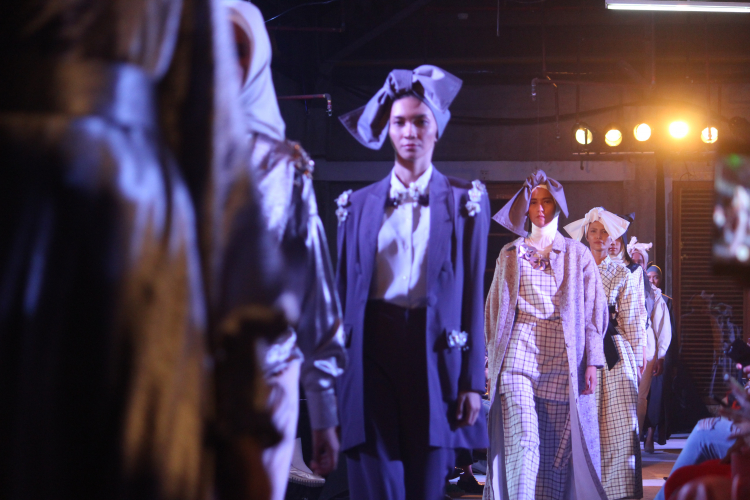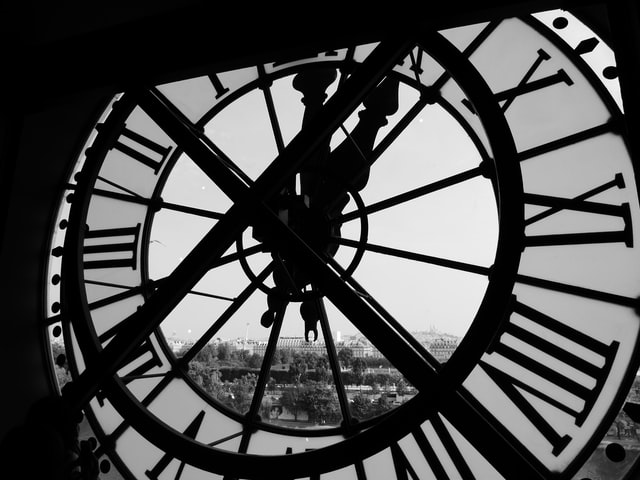AUP Fashion Talks: "Time in Fashion"

Although the general public often overlooks the concept of time within fashion by focusing more on designers and their work, Professor Caroline Evans sees the evolution of mankind and fashion through a different lens. As co-editor of Time in Fashion: Industrial, Antilinear and Uchronic Temporalities alongside Alessandra Vaccari, Italian Professor and Researcher of Fashion and Design at the University of Bologna and Venice, the powerhouse duo have reimagined the notion of time through the history of fashion, beginning with the standardization of western time in the 1880s.
This standardization of Western time was crucial in the development of modern fashion, as it allowed the development of the fashion trade. As time became a commodity, the concept of time was linked to commodity culture, and as a result, the economics within the fashion trade thrived. Evans suggests that time itself is a construct linked to Western trade, the expansion of the Western empire, and the West's colonization of other territories.
The rise of industrial time introduced the seasonal nature of fashion as an industry, which is the system most individuals know and follow today. Yet even though industrial time is the most popular today, it was still met with criticism upon its conception by individuals such as renowned German philosopher, Karl Marx. Marx outwardly criticized the western fashion system owing to its rigid calendar and capitalistic rhythm, since the seasonal cycle has a strong impact on workers and wearers alike. He ultimately cited fashion and its industrial, seasonal system as, "murderous, meaningless, and [capricious]."
Image credit: Unsplash/Murray Campbell
Following industrial time is antilinear time, which looks at fashion design as a, "ceaseless process of adaptation, reconstruction and recombination of motifs, in which nostalgia and revivals play their part." Evans describes antilinear time as a different technique for looking at fashion design as a whole, since the word, "antilinear," is defined as the antithesis of clocked time, ultimately meaning that time is fluid. Since fashion focuses on how to represent time and moments through design, an antilinear approach is an alternative model of time that derives from the postmodern period. Thus, designers play with antilinear time by engaging with the idea that fashion registers change, but is also a marker of time in itself. Evans synthesizes her notion of antilinear time with works by other fashion theorists such as Fashion, Femininity and Modernity by Ilya Parkins and The Evaporation of Temporality by Ulrich Lehmann.
Uchronic time, the final section of Evans and Vaccari's work, is arguably the most fascinating, since "uchronia" is a 19th-century neologism describing an alternate history, essentially something that could have occurred had, for example, Europe not colonized Africa. Thus, uchronic time, "construes fashion's 'imaginary', with its capacity for fantasy and myth-making, as a form of alternate history that asks 'what if?'"
In this way, alternative histories are speculative fiction that came to be described as, "uchronia." They feature characteristics of the vintage, the nostalgia, and the gloss of age as manufactures of synthetic memory. Evans cited Lagos-based art director and stylist Daniel Obasi's short film, "An Alien In Town" when describing uchronic time in fashion. The short film is a, "retro-futurist fantasy following two bright, young Gidi inhabitants (wearing looks by Nigerian designers Tokyo James and Abiola Olusola in Vlisco’s latest Dutch Wax fabrics) as they discover a blue-skinned alien and decide to teach her the ways of their city. From eating local dishes to visiting a hair salon to becoming a fashion model, their new out-of-this-world friend fits right into this bustling, colorful metropolis."
Overall, Evans presented her Time in Fashion: Industrial, Antilinear and Uchronic Temporalities in a sophisticated, eloquent manner, offering AUP students a unique opportunity to listen and converse with a professional fashion theorist who is making significant academic contributions to her field, even in the era of COVID-19.
You can purchase Professor Evans and Vaccari's Time in Fashion: Industrial, Antilinear and Uchronic Temporalities here.








